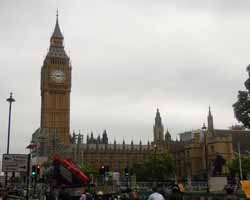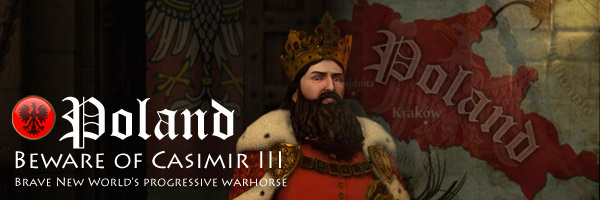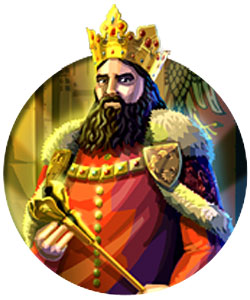Last November, my girlfriend and I took a trip to Denmark and visited the Viking Ship Museum in Roskilde. That was a great trip, and the ship museum was pretty great, but there were a couple things that we wanted to do, but which we couldn't because the ship museum doesn't operate them in the winter. For one thing, the museum has a collection of reconstructed Viking ships, including a full-size longship. These ships are usually docked in the harbor, along with some living exhibits of the construction and maintenance of these ships and the ropes and sails used to sail them. During winter, the exhibits are closed and the ships themselves are brought onto land and covered in order to prevent ice from forming and damaging the ships.
More importantly, the museum offers tourists the opportunity to go out sailing the reconstructed ships with a couple of museum guides. This service is also only offered in the summer due to weather restrictions, and we decided that we wanted to go back to Denmark so that we could sail a Viking ship!

Big Ben was the first of several Civilization
world wonders that I'd get to see.
She found affordable tickets to London, and we allocated two weeks to spend in Europe this summer. My dad also expressed an interest, and we offered to take him with us and pay for part of his airfare and lodging expenses as a combined Father's Day and birthday gift (his birthday is in May). We ended up deciding to take him to London, England, to Coppenhagen, Denmark, and to Munich, Germany.
London, Stonehenge, and Shakespeare
Our first stop was London, England on June 26th. We did some of the usual tourist things, like visit the Tower of London and walk by Parliament and Big Ben (one of several Civilization wonders that I would be visiting during this trip!) and Westminster Abbey. We also had fish, chips, and beer in a pub and started two week's worth of gluttonous eating! Despite walking 15 to 20 miles per day, I still gained 3 1/2 pounds during the trip.
The British Parlaiment building was covered with scaffolding, apparently being repaired or remodeled. This would actually become a recurring theme during this trip, as many of the places that we visited would be covered with scaffolding.
We visited the Imperial War Museum, including the Churchill Warroom.
I tried on some World War I-era clothing, which was very uncomfortable and itchy.
The second day (Tuesday), we visited the Churchill Warroom and the Imperial War Museum. I had previously visited the Imperial War Museum in Manchester during my trip to the U.K., so this time we got to see the larger museum in London. I was a little bit disappointed that the museum didn't cover British Imperial history prior to World War I. There were no exhibits about colonial British sailing ships. The museum starts with World War I, and then goes through World War II, the Cold War, and the War on Terrorism. It also included an exhibit on the Holocaust, which was interesting because the exhibit started on the top floor, and then descended to the lower floor as the exhibits shifted from persecution of the Jews in Germany to the full-blown "final solution" period. It was a clever bit of symbolism to descend into the fullest horrors of the Holocaust.
On Wednesday, we did a day-trip with a tour company to Windsor Castle, the Roman bathhouse in Bath, and to Stonehenge (another Civ wonder!)... [More]
bd0b357f-ba17-4dbe-8cc2-fb88d8d4978c|0|.0
Tags:Europe, holiday, vacation, travel, passport, AirBnB, London, England, Stratford Upon Avon, Bath, United Kingdom, Coppenhagen, Denmark, Roskilde, Warsaw, Poland, Munich, Germany, Bavaria, Dachau, Zugspitze, Salzburg, Austria, Imperial War Museum, Viking, Viking Ship Museum, Land of Legends, cosplay, sailing, beer, William Shakespeare, Royal Shakespeare Company, Titus Andronicus, Mozart, Stonehange, Neuschwanstein, Big Ben, UNESCO World Heritage Site, English Heritage trust, British Museum, London Museum of Natural History, World War II, Holocaust, concentration camp, allergies
UPDATE (September 9, 2014, 2:45 PM Pacific Time)
Shortly after publishing this blog, I came across a forum post that contradicts the information presented in this blog post. As such, I will review the actual source code in the Civilization V dll, do some more testing with the game, and revise the post as necessary. In the meantime, I'll leave the unaltered post here, for posterity. I apologize for the inconvenience.
A lot of buildings in Civilization V mention that they are affected by tiles or resources "near the city", but this quality of being "near a city" is poorly-defined within the game. So what exactly does it mean? I haven't seen any in-depth articles about this topic on the web or in the game's Civilopedia, so I thought I'd outline the important bits here.
Basically, a tile is "near" a city if that city was the first city in its respective empire to claim that tile within its workable radius.
So if you have a single tile or resource that lies between two cities, and both cities' workable ranges overlap that same tile, then that tile is not "near" both cities. It is only "near" the first city that owned that tile. This means that if you go into the city management screen and assign the second city to work that tile, it may receive yield bonuses associated with any improvements or buildings that affect it (such as the stable buffing pasture resources), but the tile's contents will not be considered "near" that second city for other purposes. This includes:
- requirement of an improved Horse or Ivory to build a Circus,
- requirement of an improved Horse, Cow, or Sheep to build a Stable,
- requirement of an improved Iron to build a Forge,
- requirement of an improved Stone or Marble to build a Stone Works,
- requirement of an improved Gold or Silver to build a Mint,
- wonder production bonus from nearby Marble,
- requirement that the city be adjacent to a Mountain in order to build an Observatory,
- trade route income from resource diversity,
- and so on...
Say you have two cities (for example Rome and Antium) whose workable ranges overlap a pastured Horse. Rome was the first city to claim the Horse tile. Rome can, therefore, build a Circus (assuming Trapping has been researched). If you go to the management screen of Antium, you can assign it to work the Horse tile (which prevents Rome from being able to work that tile), but Antium still cannot build a Circus. That is, two cities cannot build a building that requires they both have the same tile.
[LEFT] Rome has annexed a tile containing horses and is building a Circus.
[RIGHT] Later, that tile overlaps with Antium's workable radius, but it cannot build a Circus because the horse was originally claimed by Rome.
Alternatively, if a resource is claimed by a city's culture, but is outside of a city's workable radius (four tiles or more away), then it never counts as "near" that city... [More]
c178571d-236f-4930-b087-5ba4b365ee97|0|.0
Tags:Sid Meier's Civilization, Civilization V, Civilization, Civilization V: Gods & Kings, Civilization V: Brave New World, Civilization: Beyond Earth, building, near, resource, luxury, resource diversity, Arabia, bazaar, Poland, Portugal, mare clausum, trade route, circus, stable, forge, stone works, mint, city borders, owned tiles, Ducal Stable, Civilization V

Halfway through my series of strategy posts about Brave New World's new civilizations, we have Poland.
Poland is a Slavic nation in Central Europe that can trace its origins to the 10th century AD, when Mieszko I united the pagan tribes that were ruled by his ancestors and was crowned the first King of the Polans. He was baptized during his reign and the young Polish kingdom quickly became part of the Catholic sphere of influence. During the late Middle Ages, the rulers of Poland began putting increasing focus on educational and social reforms, and Poland became one of the best-educated nations in all of Europe, which may have contributed to it becoming a popular destination for immigrants - particularly Germans, Jews, and Armenians. The high level of education may have also helped protect the Polish population from the effects of the plague, as Poland had one of the lowest mortality rates of any European nation during the time of the Black Death. The combination of large numbers of immigrants and the popularity of Protestantism during the Reformation helped Poland to become a very tolerant culture. Its central location in Europe made Poland a subject to many wars, particularly with Germany, Prussia, and Russian. The nation was occupied by Nazi Germany during World War II, and was firmly within the Iron Curtain during the Cold War, but eventually returned to a democratic style of governance based on a market economy after the fall of the Soviet Union.

Casimir III was the last King of Poland from the Piast (founding) Dynasty, and is widely regarded as the nation's greatest leader. He inherited a nation that was crumbling due to a war-blasted economy, and the legitimacy of his claim to the throne was questioned by his political rivals. In order to gain the favor of the landed elites, he reformed Polish law to grant special privileges to the higher castes; and he gained the favor of Jewish immigrants by granting them unprecedented protections under the law that allowed them to maintain their religious and cultural identities during a time in which other European Jews were being forced to convert to Christianity. During his reign, he founded Poland's first major university, and promoted an educated society. Casimir remarried several times, and since all of the children from his first and fourth (final) marriage were daughters, he left no lawful heirs; thus, he named one of his nephews to be his heir. By the end of his reign, Poland had doubled in size and had a flourishing economy and growing educated classes.
Led by the bearded and intimidating Casimir III, Poland was an immediately attractive Brave New World civilization due to Solidarity. Free social policies you say? Yes, please! Give me those policies so that I may conquer the world! Poland is Chichian's favorite civ in the expansion (and maybe the whole game) due to her fondness of social policies. I can't really argue against her. [More]
93f1cb37-b3dd-48af-99d0-c48378b750e3|15|4.3
Tags:Sid Meier's Civilization, Civilization V: Brave New World, Civilization V, Poland, Casimir III, Winged Hussar, hussar, Solidarity, social policies, pastures, horses, mounted warfare, lancer, stable, Heavy Charge, Ducal Stable, Civ-V
|

| 12 | | | | | | | 60 | | 11 | | | | | | | 55 | | 10 | | | | | | | 50 | | 09 | | | | | | | 45 | | 08 | | | | | | | 40 | | 07 | | | | | | | 35 | | 06 | | | | | | | 30 | | 05 | | | | | | | 25 | | 04 | | | | | | | 20 | | 03 | | | | | | | 15 | | 02 | | | | | | | 10 | | 01 | | | | | | | 05 |
|